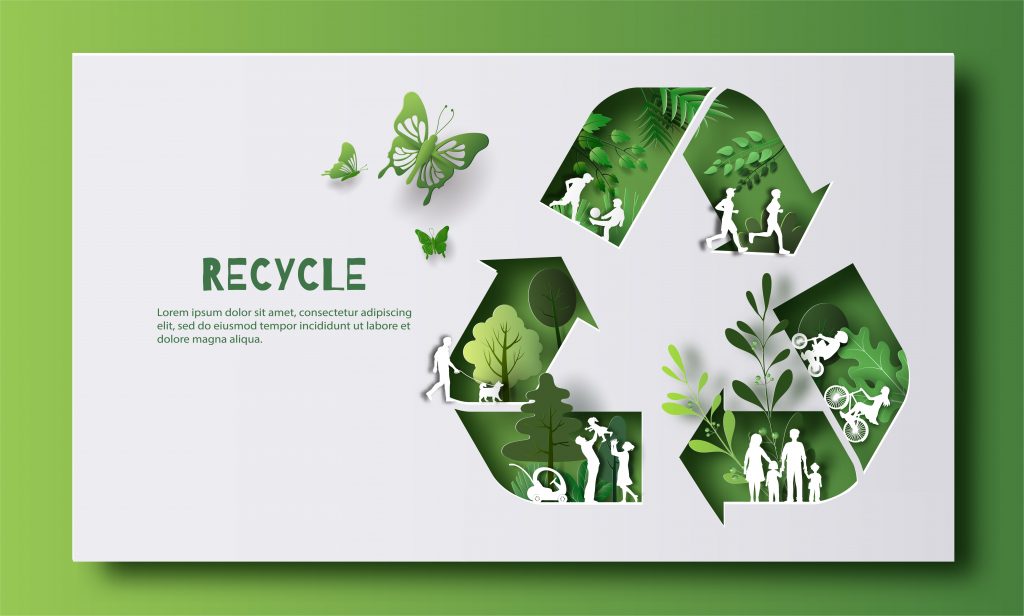How can regular consumers recycle biodegradable plastics? What kind of recycling happens with compostable plastics? It’s time to find out how you can pitch in with helping the world become a cleaner place, minus the plastics.
Biodegradable plastics are redefining the world of plastics as we speak. Biodegradable plastic bags replace conventional plastic bags, and the world is all the better for it, we think. But, how to dispose of biodegradable products? With the environmental impact of biodegradable plastics still being researched, it’s important to know: can biodegradable plastic be composted?
How Do You Dispose of Biodegradable Plastics?
Despite having biodegradable properties, biodegradable plastics are very tricky to process, and different countries have varying policies on how they can be disposed of properly.
For example, in the USe, some cities will instruct people to place biodegradable and compostable waste products into the residual bin or a special compostable bin. When you put biodegradable products here, the waste will be brought to a special industrial composting facility.
The facility will take care of turning the biodegradable or compostable waste into material that can condition soils.
However, there is a big what-if when it comes to these compostable and biodegradable materials.
Suppose the industrial composting facility is not equipped with the right combination of features. In that case, there’s a big chance that the compostable materials will not break down as intended, and the plastics will persist.
This is a big problem because these materials are supposed to break down, not remain as they are. So there is a huge pressure for biodegradable plastic manufacturers to set consistency in their products, so these products can be sorted properly anywhere and returned to the earth as they should.
Just so there is no confusion, compostable plastics are good for the environment because they lessen the dependence on fossil fuels. Plastics are made from gas, so you can imagine how naturally toxic they are to human health and all forms of life, in general. On the other hand, compostable plastics are derived from organic feedstock that is made from food crops like corn and sugarcane.
However, this doesn’t mean that these biopolymers will biodegrade on their own. Once they are turned into feedstock through fermentation and other chemical processes, the resulting biopolymer is as tough as conventional plastic.
The big difference is that they can be used just as well as conventional plastic. They are waterproof, and they will only begin to biodegrade once the right temperature requirements are met. Another key feature of biodegradable and compostable plastics is that they need oxygen and microbes to break down.
Can Biodegradable Products Be Recycled?
No, biodegradable products cannot be recycled. You cannot add compostable or biodegradable materials to recycling bins as they can contaminate a batch of conventional plastics.
Check first if your city has an industrial composting program and then determine their guidelines for handing over biodegradable products such as plastic bags and other bioplastic products.
Furthermore, make sure that you don’t mix the compostable plastics with conventional plastics to make it easier for the composting facility workers.
Several ASTM guidelines can be used to define what compostable material is properly.
The first guideline is that the material must be broken down through natural means – specifically, through a biological treatment method in the right facility. As we have discussed earlier, the right facility is an industrial composting facility with all the equipment and space needed for the actual composting process.
There are also commercial composting facilities that primarily perform the biological treatment for profit. These are fine, too, as they are essentially the same thing as industrial composting facilities, only they are privately owned and not publicly operated.
Next, the compostable material must break down at an equivalent rate as other compostable materials are being treated at the same facility. The average compositing period is half a year or less.
The compostable material will be brought in and treated like food waste, garden waste, etc. This is the ideal time for something to return to compost, which is already a success for those who want to keep bioplastics off oceans and seas.
The most important requirement/guideline would be the trace of the composted bioplastic after the biological treatment. The compostable plastic must not leave behind traces of toxins similar to the residual toxins of conventional plastics. The reason for this is that compostable plastic will be used eventually to help plants grow. If they don’t break down like other types of materials, then it’s not going to work – the compostable plastic will not perform its duty.
What’s Wrong with Biodegradable Plastic?
There are several issues with biodegradable plastic, starting from the raw material used for them. The main advantage is that the biomass is organic, so that’s a plus, but the organic biomass has to come from somewhere. That means manufacturers have to consume land and resources that could have been diverted to food production.
There has always been a global food shortage, and part of the problem is manufacturers are using a lot of land for agricultural activities that will not be used for food, primarily.
The next issue with biodegradable plastic is that it doesn’t break down the same way as other organic matter. Take a banana peel, for example – it will break down no matter what happens.
Nature takes care of how it breaks down. Biodegradable and compostable plastics can’t. They’re mechanically durable, and if they are not composted properly, bioplastics will last about five hundred to a full one thousand years before they break down – like conventional plastic.
It’s not hard to imagine the world piling up with bioplastics and plastics if countries don’t have a decent system for collecting, sorting, and composting bioplastics.
This brings to question if bioplastics are the answer to the world’s plastic problem, as it takes some effort to bring it back to the earth.


